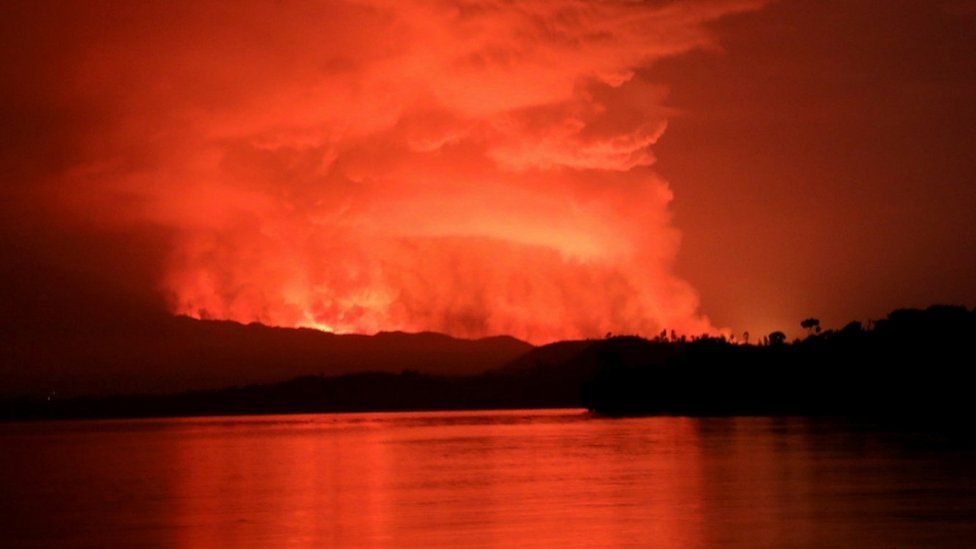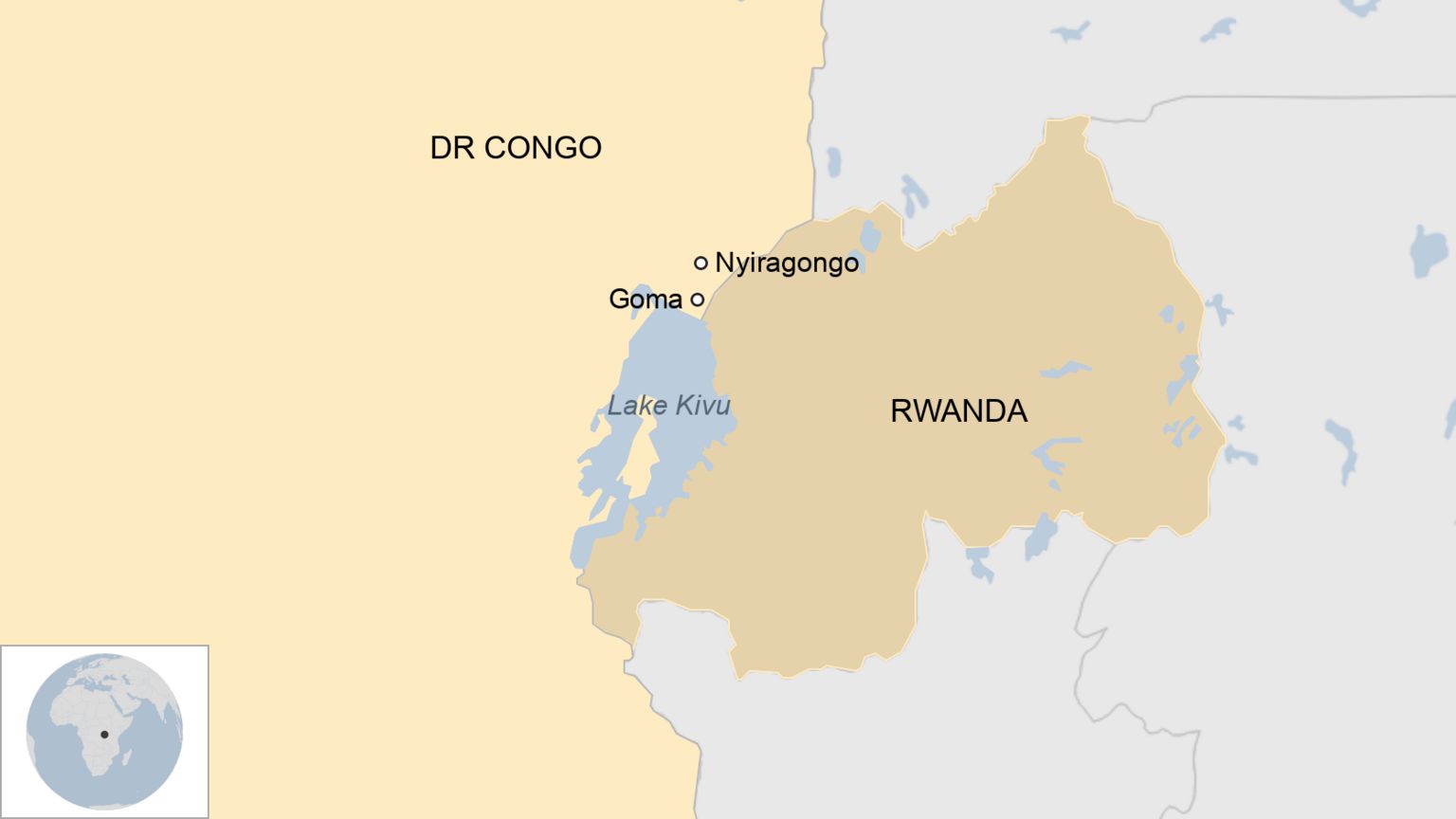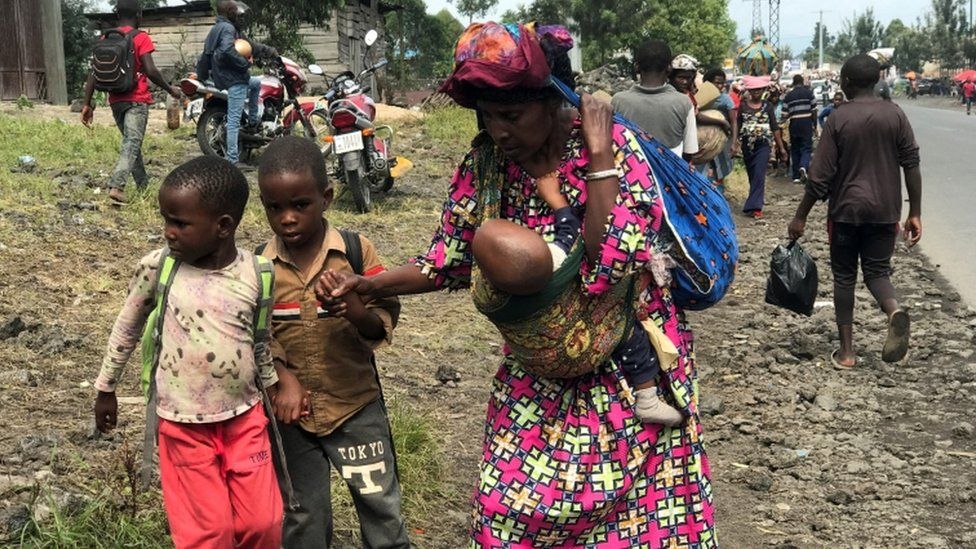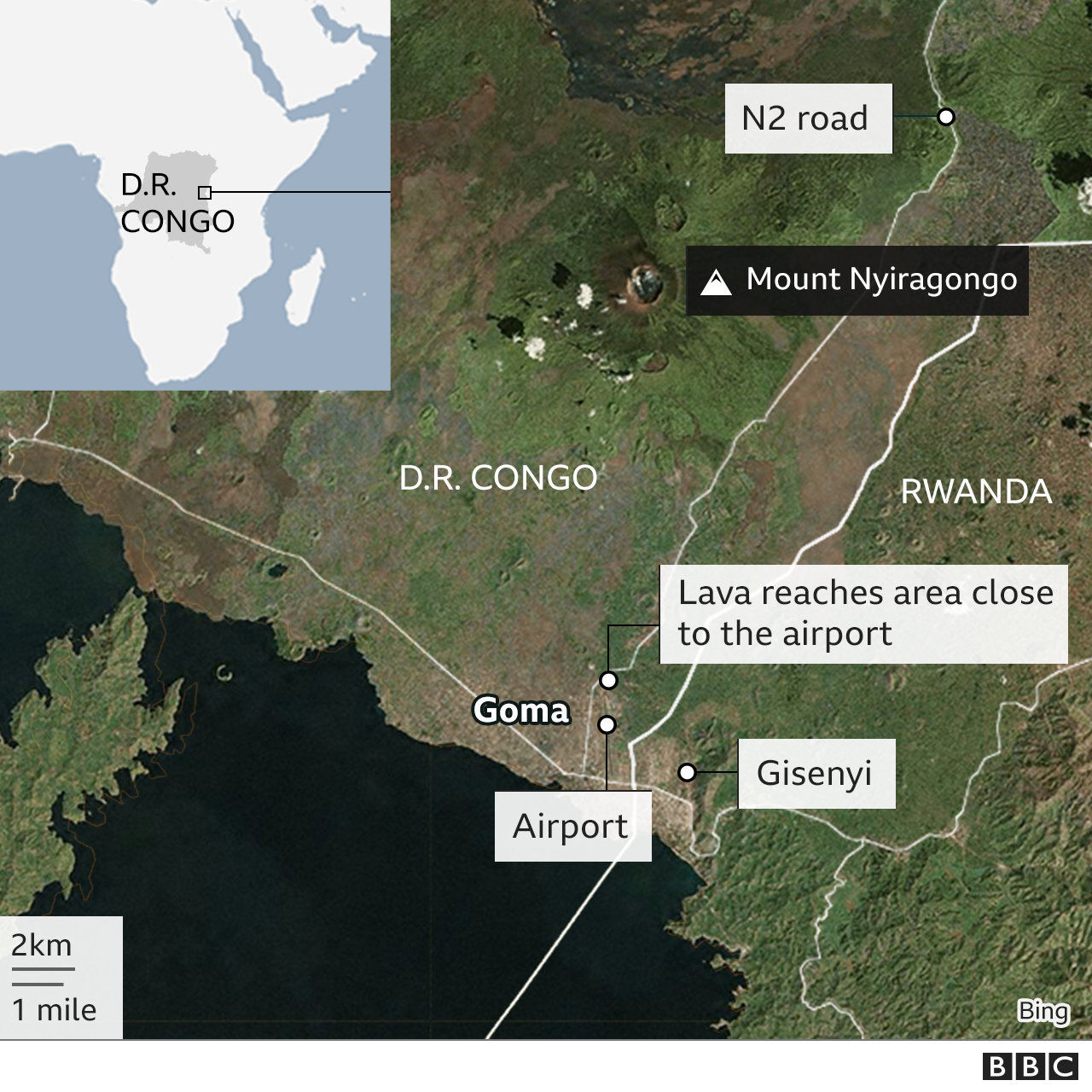A sinister threat is lurking beneath a lake near the city of Goma in the Democratic Republic of Congo.
Scientists say underground magma has been flowing toward Lake Kivu since the deadly eruption of the nearby Mount Nyiragongo volcano on Saturday.
An eruption from under the lake could trigger the release of a lethal, suffocating cloud of gas, experts fear.
Known as a limnic eruption, this event poses a rare but potentially catastrophic risk to Goma's residents.
It would be terrible but "no-one would ever really claim they know when or if this is going to happen", science journalist and volcanologist Dr Robin George Andrews told the BBC.
Fearing this and other possible volcanic activity, tens of thousands of people have been told to evacuate Goma, leaving the city eerily deserted.
"There's a magma under the ground here in town that could erupt at any moment apparently. It's quite scary," one fleeing resident said.
Ordering the evacuation a day earlier, the military governor of North Kivu province, Ndima Kongba, said magma had been detected underneath Goma and nearby Lake Kivu.
"Right now we can't rule out an eruption on land or under the lake," Mr Kongba said.
But how do limnic eruptions happen, and what makes them so dangerous?
What is a limnic eruption?
A limnic eruption involves the release of dissolved gases that have accumulated at the depths of a lake. Gases such as carbon dioxide (CO2) and methane can seep into lakes through volcanic vents.
To trigger the release of these gases from the water, a disturbance of some kind is needed.
That disturbance could be an eruption, a landslide, an earthquake or even a small rise in the temperature of the water.
This is why scientists are worried about the magma underneath the lake.

In theory, the magma could heat up the water, causing the dissolved CO2 to mix rapidly with upper layers of the lake and escape into the air.
Consider the opening of a shaken-up fizzy drink as an analogy. When the lid is opened, the pressure is released, allowing the carbon dioxide to escape.
Why is it so dangerous?
High concentrations of CO2 can displace oxygen in the air and affect breathing.
Dr Andrews said Lake Kivu is estimated to contain about 300 cubic km of CO2, which is invisible, odourless, and denser than air. If there is less oxygen to breathe in the air, serious and sometimes deadly health effects can ensue.
It has happened before at a lake in Cameroon, with tragic consequences.
In 1986, Lake Nyos released dissolved CO2 into the air after a landslide. The cloud of CO2 asphyxiated an estimated 1,800 people in nearby villages.
The key difference in DR Congo, of course, is the size of the lake and the population centres around it.


Measuring about 475m (1,558ft) deep, Lake Kivu has more than twice the depth of Nyos, not to mention overall size: 2,700 sq km for lake Kivu to 1.58 sq km for Nyos.
"If there was a big underwater volcanic explosion, it could cause an eruption of all this gas that would flood the urbanised shores of Lake Kivu, which would be an incredibly dangerous thing to happen," Dr Andrews said.
What's the likelihood of it happening?
The short answer is: no-one can be certain. Not even experienced volcanologists have a clear idea.
Dr Andrews said it was "incredibly difficult" to predict what would happen in the coming days.
While scientists know magma is near Lake Kivu, they can't be sure when or if it might breach the surface, or what kind of eruption style it may cause, Dr Andrews said.
Please refresh your browser

"The best that anyone can do at the moment is be really cautious. I'm really glad to see that areas are being evacuated just in case the worst happens," he said.
What other scenarios are feared?
A limnic eruption was one of three possible outcomes flagged by the Goma Volcano Observatory (OVG).
A second is another eruption at the 3,500m-high Mount Nyiragongo - one of the world's most active volcanoes.
If that were to happen, the eruption would send renewed lava flows southwards towards Goma, threatening buildings in their path.
Even though the volcano is 10km (six miles) from Goma, lava "can move as fast as a speeding car so it's very difficult to outrun", Dr Andrews said.
This would add to the devastation of Saturday's eruption, which killed at least 32 people and left thousands homeless, according to the United Nations (UN).


The possible release of methane from the lake brings a third scenario into play as well.
There is a risk that methane can ignite, if it is released in high enough concentrations. For this reason, Jan Egeland, secretary general of the Norwegian Refugee Council, said it was not safe to be in Goma anymore.
"Lake Kivu is unsafe because there are vast quantities of methane gas trapped on the bottom of Lake Kivu and that could be released by the volcano and the constant earthquakes which were there all the time," Mr Egeland told the BBC on Thursday.
What's the situation on the ground in DR Congo?
About 400,000 people have fled Goma over fears of a fresh volcanic eruption, the UN said on Friday.
The international agency appealed for "urgent international assistance to avert what could be a catastrophe for children".


A BBC reporter in Goma says the city looks like a ghost town. Sake - 20km away - is full of displaced people.
Others are moving into neighbouring Rwanda, the Virunga National park and even across Lake Kivu.
Aid agencies are trying to provide food, shelter, water and sanitation.
A Goma Volcano Observatory official told Reuters news agency the risk of a second eruption appeared to be subsiding on Friday, as the frequency and intensity of tremors had lessened.
https://ift.tt/3fu9Ury
World
Bagikan Berita Ini














0 Response to "Mount Nyiragongo: Why DR Congo fears the explosive power of a lake - BBC News"
Post a Comment